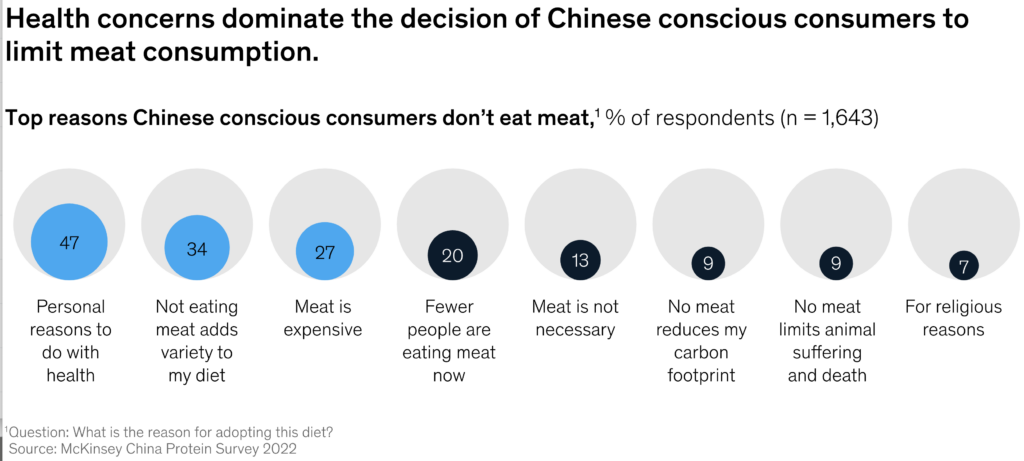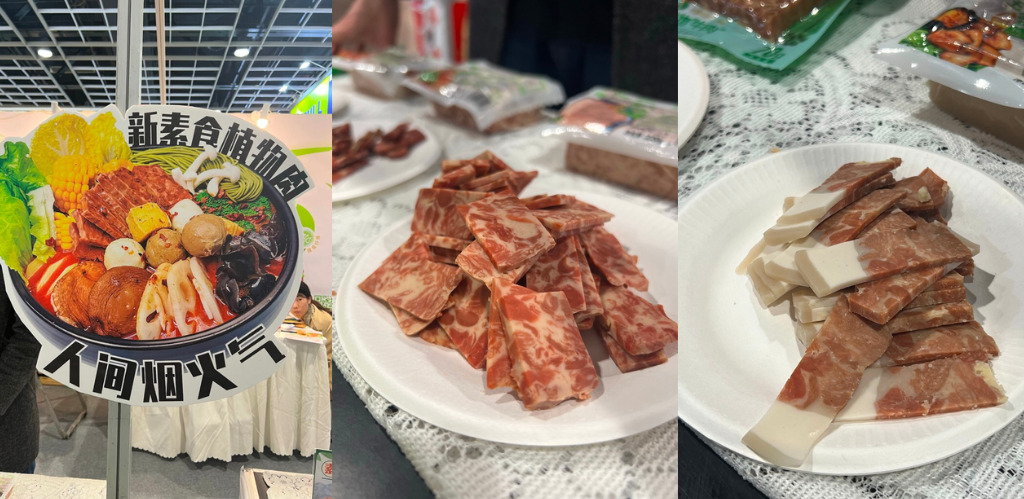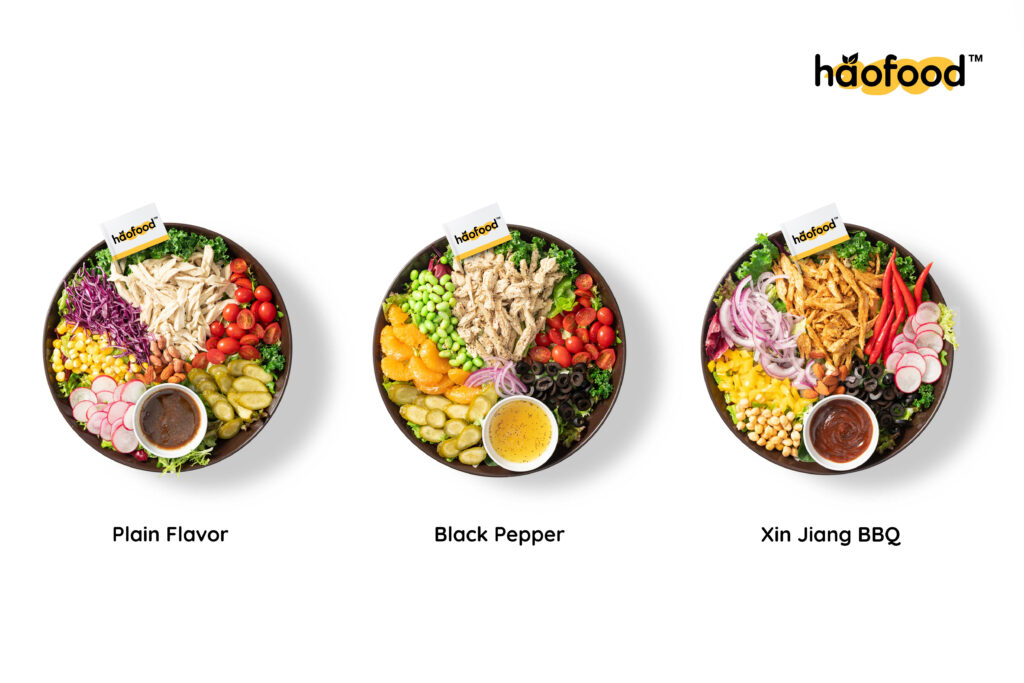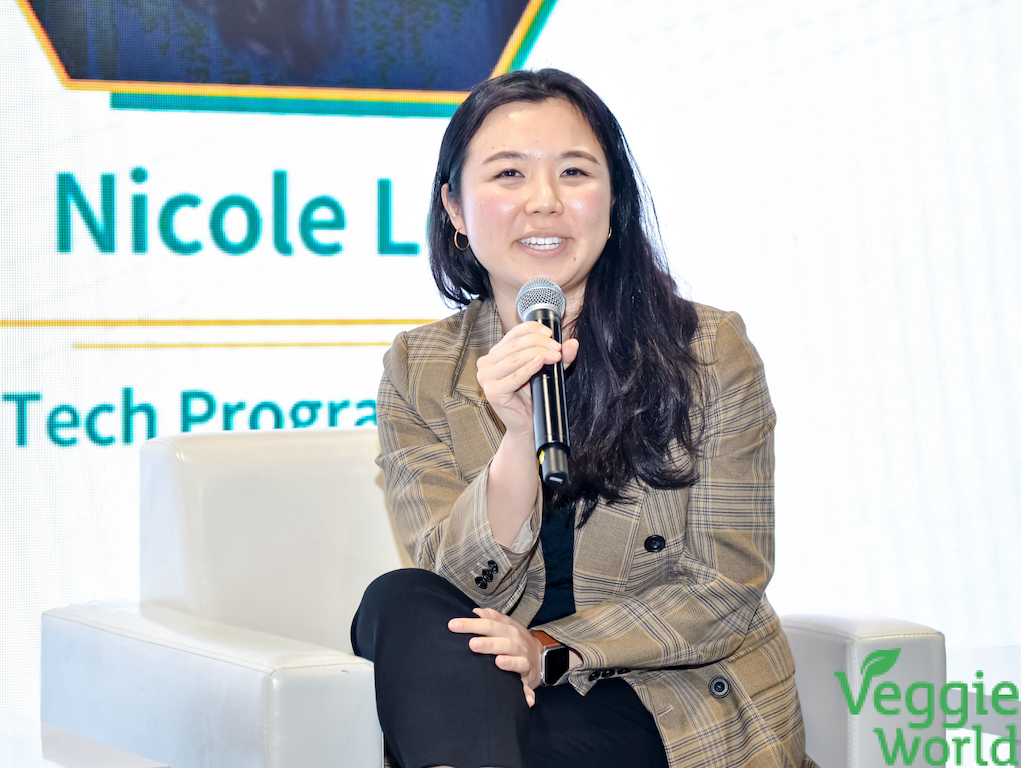8 Mins Read
Last month, I had the opportunity to attend the VeggieWorld Expo & New Protein China Forum in Nanjing, where I experienced first-hand the state of food innovation and sustainable protein in China. I found myself leaving with both optimism and more questions.
Having not traveled to China for over 10 years, it was eye-opening to learn about the latest trends and developments in the country’s nascent alternative protein industry.
China’s population of nearly 1.5 billion presents a powerful opportunity for “new protein”, as the industry is known locally, to disrupt the food system.
My sense after my trip is that while consumers are becoming increasingly aware of the category, the alternative protein industry will experience roadblocks when it comes to consumer acceptance and the regulatory approvals needed for the newer food technologies as they advance toward commercialisation.
Why New Protein? Why China?
Mock meats made with soy or wheat gluten have been a part of Chinese food culture for centuries, with wheat gluten eaten as early as the sixth century. While analogs such as tofu are already familiar in Chinese cuisine, the word “alternative” or “substitute” could easily lead consumers to mistake new-age, plant-based products produced with unfamiliar processing techniques for traditional vegetarian meat products. Furthermore, soy-based mock meats are typically served fried or heavily sauced, and carry with them a negative health stigma.
The more recently coined Chinese term used to refer to alternative proteins is “xindanbai” (新蛋白), which directly translates as “new protein.” The term “new protein” allows the industry to extend its definition beyond plant-based into new forms of protein production, from precision fermentation to cellular agriculture, to establish these technologies as a novel category of its own. Further, it reduces the underlying connotations associated with some of these new food technologies as a complete replacement for animal proteins, which are a vital part of Chinese local communities and food culture.
According to a recent report on Chinese meat consumption habits, over 70 percent of Chinese consumers report rarely or never consuming meat alternatives, compared to 40 percent in other parts of the world. In addition to this, consumers seem to be less attracted to consuming alternative protein as a climate-related action. Among those who choose not to eat meat, their motivations centered around health, price, or food variety concerns, rather than the environment.

Those familiar with the industry know that one-third of global greenhouse gas emissions come from our food system, most of which point to land use and methane-related emissions from livestock agriculture. As such, alternative protein remains a significant part of the solution to fight global warming and the climate crisis. The industry offers solutions that enable food production at a fraction of the land, water and energy cost of industrial animal farming.
China’s commitment to tackling climate change is evident through recent food and agriculture policy; not only did China’s Ministry of Agriculture and Rural Affairs include ‘future foods’ as part of their Five Year Plan last year, President Xi referenced biotechnology and alternative protein in a speech in March 2022.
Startups & Major Corporates Getting Involved
At VeggieWorld, I was able to try a whole host of plant-based products across meat, seafood, and dairy categories. Like in other parts of the world, the non-dairy sector was far more developed than the meat and seafood space, specifically in the alt milk vertical.
Coffee chains across China have been aggressively rolling out plant-based milk options nationwide- some even feature an almond milk seasonal range. The expo itself featured over 10 different oat milk brands fighting for a share of the non-dairy-drink pie, from established brands like Oatly to emerging local brands such as Vitalbox.
Aside from individual food brands, numerous established multi-brand industry players exhibited. Booth participants included ingredient providers, to equipment manufacturers, and food co-manufacturers all looking to engage in building out supply chains and identifying commercialisation opportunities, with CPG giants like Nestlé entering the domestic market- the company recently launched Harvest Gourmet, a plant-based brand developed in-house.
China’s unique e-commerce ecosystem and its highly-opinionated netizen population mean online channels and social platforms (such as WeChat, Douyin, and Xiaohongshu) are absolutely key when it comes to distribution and a data-rich opportunity for new protein brands to list their products and gather immediate customer feedback so they can continue to adjust offerings to match consumer expectations.
Localisation, localisation, localisation!
If there’s one word I heard over and over during the many conversations I had in Nanjing it’s localisation. This was the word used most frequently in all my conversations in Nanjing. As most of the expo featured plant-based products from both new and established brands, what became really clear was the unique flavours, textures, and applications of each product to the Chinese market.
For example, Sweden’s Oatly was showcasing a wide range of flavours and packaging, including a “Tea Master” version for making tea drinks (whereas in Western markets the focus is more on coffee and barista offerings), a “Camellia Flavour Oat Latte”, and a co-branded Milk Tea with Lan Fong Yuen (蘭芳園) – the inventor of Hong Kong-style milk tea.

Chinese brands like Xin Meat (新素食) showcased their homegrown advantage by developing plant-based meat products that catered to local tastes, including pork belly (五花肉) and spiced beef (醬牛肉), which feature a unique marble texture.

Another Chinese startup, Haofood, featured their newest clean-label shredded chicken made with peanuts, available in 3 flavours that suit local tastes and can be used in ‘light food’, a recent trend in China focused on health-oriented meals with low sugar, salt, and fat. Prepared meals and ready-to-eat formats will dominate the Chinese market, and alternative protein is not immune to that.

While I did try many amazing products at the expo, there were still some very obvious works-in-progress, with beany tastes or textures reminiscent of first-generation plant-based products. A big part of the success of these new protein products will be managing consumers’ expectations around mouthfeel and texture when compared to meat, as well as ensuring an enjoyable eating experience.
There needs to be even more interaction and engagement between food producers and consumers, including rigorous testing, chef-driven preparations, and education on how to cook these products. This means developing technologies that can efficiently produce ingredients and proteins to further taste and useability.
In addition, price will be key to managing “new protein’ expectations. Technologies that can manufacture these products more efficiently will be vital to develop this category as they enable brands to produce at lower costs and achieve price parity with conventional meat.
Still Early Days For Cultivated Meat and Fermentation
It’s worth noting that the conference barely featured innovations outside of plant-based, such as cellular agriculture or precision fermentation technologies. While there are a few companies innovating in the space, it is possible that market conditions, as well as regulatory limitations and a still-unclear-commercialization pathway, have led to fewer Chinese entrepreneurs and investors entering the space.
That being said, China’s growing demand for animal foods as well as its position as a global leader in biotechnology lays a foundation for existing industry players to partner with new startups in the alternative protein space. For example, Chinese cultivated meat company CellX recently announced its partnership with pharmaceutical equipment manufacturer Tofflon to build China’s first pilot production facility for cultivated meat.
As Beijing introduces further policies and incentives to support scaling up “future foods”, I look forward to more development opportunities for the alternative protein industry in China. Whether it is promoting clearer guidelines for new food technologies, offering funding programs for research and development, or supporting infrastructure for biomanufacturing, there is a lot of opportunity for growth in the industry that is still nascent.

Demystifying The Chinese Market
Both within and outside of the alternative protein scene, many startups around the world see huge potential in China, but still find it to be something of a black box. As with consumers in most countries and regions, those in China have an entirely different set of values, as well as avenues for discovering, accessing, and adopting new products into their lifestyles. What makes the China market particularly challenging to navigate is its complex regulatory landscape, consumer buying habits, local distribution networks and significant barriers to entry. For a detailed overview of Chinese attitudes toward plant-based foods, I recommend this report by Good Growth Co.
As the regulatory environment for alternative proteins is still developing, understanding the fundamentals of what Chinese consumers want and need is a must in order to attract more foreign brands into the market and foster greater research and commercial exchange between innovators. For food to be a true climate solution, it will require collective efforts to uplift the industry as a whole.
China = The Next Leader in New Protein?
In a country where food is so intrinsic to the local culture, and meat consumption is growing along with a rapidly expanding middle class, the new protein community must embrace the idea that food is a climate solution, while, at the same time, adapting to local foodways and expectations. Overall, my experience at VeggieWorld left me feeling optimistic about the future of sustainable and plant-based foods in China.
China’s alternative protein industry has a long way to go, but there is significant impact potential given the large addressable market, the willingness of its younger generations to try new products, governmental signaling for industry support, and emerging biomanufacturing capacity. Perhaps China will be the next major player in developing new protein – a step toward a more accessible, sustainable, and healthy food system for all.
Author’s Notes: These takeaways are based on one event and a few days I spent in Nanjing, China, so my observations and conversations may not be representative of the alternative protein sector in China as a whole.
I recognise that alternative protein is one of many of solutions to the many challenges facing our global food system. Given China’s food security and safety concerns, as well as its aging population, other solutions involving agritech, novel food ingredients, supply chain optimisation, waste management and other biotechnologies will play an important role.
Disclaimer: some of the companies mentioned above are Brinc portfolio companies.



